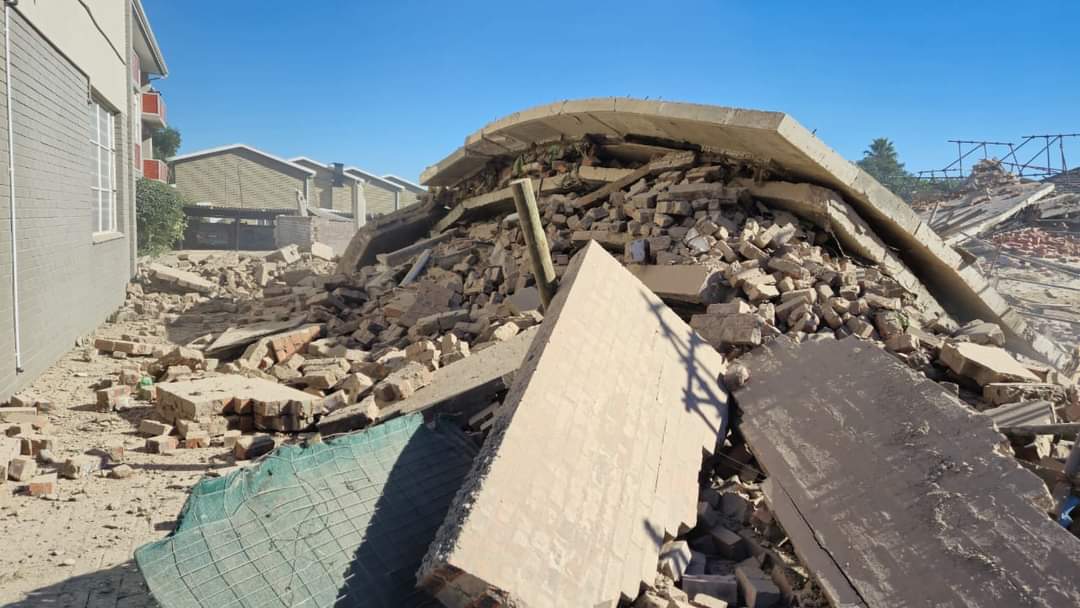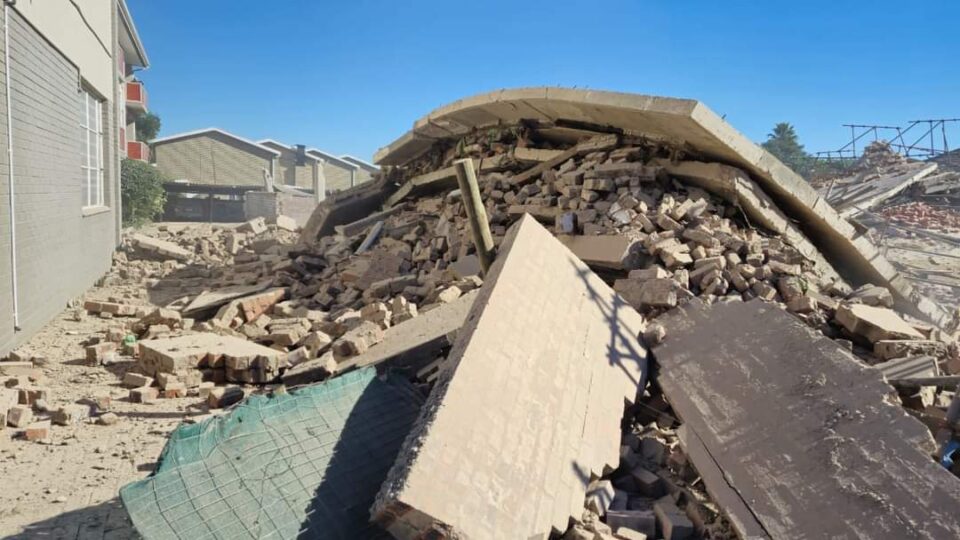The collapse of a building in the Kanduyi area of Bungoma County, resulting in the tragic loss of lives and leaving many others trapped under rubble, is a sobering reminder of the importance of rigorous safety measures in construction and demolition projects. As the community grapples with the aftermath of this devastating incident, it’s essential to examine the factors that may have contributed to this tragedy, including the circumstances surrounding the building’s deconstruction by the County Government of Bungoma as part of the expansion of Masinde Muliro stadium.
The decision to demolish or deconstruct a structure is often driven by the need for urban development, infrastructure improvement, or public safety concerns. In the case of Masinde Muliro stadium, the expansion project likely aimed to enhance sports facilities, accommodate larger crowds, and promote community engagement through athletic events and other gatherings. However, the execution of such projects must prioritize the safety and well-being of the individuals involved, including workers, residents, and bystanders.
One key aspect to consider is the structural integrity of the building undergoing deconstruction. Older structures, especially those with a history of neglect or poor maintenance, may pose significant risks during demolition. Factors such as deteriorating materials, structural weaknesses, and inadequate support systems can increase the likelihood of collapse, endangering both workers and nearby residents.
Another crucial consideration is the method and equipment used in the deconstruction process. While modern demolition techniques employ advanced machinery and careful planning to minimize risks, improper procedures or equipment failure can have disastrous consequences. It’s essential for authorities overseeing such projects to ensure that contractors adhere to safety standards, conduct thorough risk assessments, and implement appropriate safeguards to protect workers and the surrounding community.
Furthermore, community engagement and communication are vital aspects of any demolition or construction project. Local residents should be informed about the scope of the project, potential hazards, and safety measures in place to mitigate risks. Open dialogue between government agencies, contractors, and community representatives can help identify concerns, address grievances, and build trust among stakeholders.
In the wake of the building collapse in Kanduyi, there will likely be calls for accountability and investigations into the circumstances leading up to the incident. Authorities must conduct thorough inquiries to determine the root causes of the collapse, identify any lapses in oversight or compliance with safety regulations, and hold responsible parties accountable for their actions.
Additionally, there may be discussions about the broader implications of urban development and infrastructure projects on public safety and welfare. Balancing the need for progress with the preservation of human lives and livelihoods requires careful planning, effective regulation, and continuous monitoring of construction activities.
Moving forward, lessons learned from this tragic event should inform future decision-making processes regarding demolition, construction, and urban development initiatives. Emphasizing transparency, accountability, and community participation can help prevent similar tragedies and ensure that development projects benefit society without sacrificing safety or human dignity.
The collapse of the building in the Kanduyi area of Bungoma County serves as a stark reminder of the importance of prioritizing safety in construction and demolition projects. While the expansion of Masinde Muliro stadium may have been well-intentioned, the loss of lives and injuries resulting from the building collapse underscore the need for stringent safety measures, effective oversight, and community engagement in urban development initiatives.
As authorities investigate the incident and assess its implications, it’s imperative to learn from this tragedy and take proactive steps to prevent future disasters. By prioritizing human safety and well-being, we can ensure that development efforts contribute to the prosperity and resilience of our communities.
The collapse of a building in the Kanduyi area of Bungoma County, resulting in the tragic loss of lives and leaving many others trapped under rubble, is a sobering reminder of the importance of rigorous safety measures in construction and demolition projects. As the community grapples with the aftermath of this devastating incident, it’s essential to examine the factors that may have contributed to this tragedy, including the circumstances surrounding the building’s deconstruction by the County Government of Bungoma as part of the expansion of Masinde Muliro stadium.
The decision to demolish or deconstruct a structure is often driven by the need for urban development, infrastructure improvement, or public safety concerns. In the case of Masinde Muliro stadium, the expansion project likely aimed to enhance sports facilities, accommodate larger crowds, and promote community engagement through athletic events and other gatherings. However, the execution of such projects must prioritize the safety and well-being of the individuals involved, including workers, residents, and bystanders.
One key aspect to consider is the structural integrity of the building undergoing deconstruction. Older structures, especially those with a history of neglect or poor maintenance, may pose significant risks during demolition. Factors such as deteriorating materials, structural weaknesses, and inadequate support systems can increase the likelihood of collapse, endangering both workers and nearby residents.
Another crucial consideration is the method and equipment used in the deconstruction process. While modern demolition techniques employ advanced machinery and careful planning to minimize risks, improper procedures or equipment failure can have disastrous consequences. It’s essential for authorities overseeing such projects to ensure that contractors adhere to safety standards, conduct thorough risk assessments, and implement appropriate safeguards to protect workers and the surrounding community.
Furthermore, community engagement and communication are vital aspects of any demolition or construction project. Local residents should be informed about the scope of the project, potential hazards, and safety measures in place to mitigate risks. Open dialogue between government agencies, contractors, and community representatives can help identify concerns, address grievances, and build trust among stakeholders.
In the wake of the building collapse in Kanduyi, there will likely be calls for accountability and investigations into the circumstances leading up to the incident. Authorities must conduct thorough inquiries to determine the root causes of the collapse, identify any lapses in oversight or compliance with safety regulations, and hold responsible parties accountable for their actions.
Additionally, there may be discussions about the broader implications of urban development and infrastructure projects on public safety and welfare. Balancing the need for progress with the preservation of human lives and livelihoods requires careful planning, effective regulation, and continuous monitoring of construction activities.
Moving forward, lessons learned from this tragic event should inform future decision-making processes regarding demolition, construction, and urban development initiatives. Emphasizing transparency, accountability, and community participation can help prevent similar tragedies and ensure that development projects benefit society without sacrificing safety or human dignity.
The collapse of the building in the Kanduyi area of Bungoma County serves as a stark reminder of the importance of prioritizing safety in construction and demolition projects. While the expansion of Masinde Muliro stadium may have been well-intentioned, the loss of lives and injuries resulting from the building collapse underscore the need for stringent safety measures, effective oversight, and community engagement in urban development initiatives.
As authorities investigate the incident and assess its implications, it’s imperative to learn from this tragedy and take proactive steps to prevent future disasters. By prioritizing human safety and well-being, we can ensure that development efforts contribute to the prosperity and resilience of our communities.


